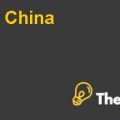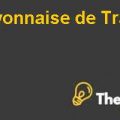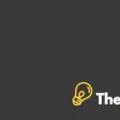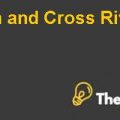AIRBUS A3XX: DEVELOPING THE WORLD'S LARGEST COMMERCIAL JET (A)
INTRODUCTION
In the month of December 2000, the supervisory board of Airbus industries committed to develop the industry by investing $11.9 billion for the launch of super jumbo jet with the passenger capacity of around 550 to 990 seats under the price list of $216 million. Previously, Boeing was the initiator for the development of a stretch jumbo with the passenger capacity around its existing jumbo. Boeing cancelled its development efforts of the stretch jumbo after the formal announcement of the Airbus.
The decision regarding the launch of super jumbo as a product was the largest product launch in the corporate history with the cost of around $11.9 billion. This was a risky expenditure o in which all of expenses were incurred in the initial stage before making the first delivery. This is an industry where several firms took these steps and failed in it and these firms include: Glenn Martin, and Lockheed. In fact, Lockheed even failed to fulfill its commitment to launch the product in the market. It was clear to all companies that the development of VLA (very large aircraft) required large amount of cost and these costs converted into losses if these commitments would fail. Boeing would generate maximum profit if it prevented the Airbus to develop the super jumbo jets.
In the $140 billion worth of commercial airline industry, the manufacturing and sale of the jet was the largest individual segment, which generated sales of $45 billion in the year 2000. The Boeing Company and the Airbus are the dominating manufacturer of the commercial airline. In addition, aircrafts delivered by these two companies were 790 in number in the year 2000 with the passenger capacity of around 100 to 200.
Boeing was the leading company in the civil aviation industry and it maintained this position for almost 40 years. This is because of the experience gained by manufacturing of B17s and B29 used in World War II and by manufacturing of B52 used in the Cold War. In addition, the company had also gained leverage regarding the manufacturing of aircrafts. Boeing’s products range included 14 models spread across 5 major aircraft families using different technologies.
Airbus was established in the year 1970 as an association of the major aerospace companies of Germany, France, England, and Spain and these companies consisted of (Deutsche Aerospace, now a Daimler-Chrysler subsidiary known as DASA of Germany), (Aerospatiale Matra of France), (Britain’s Hawker Siddeley, later BAE Systems of England), and (Construcciones Aeronauticas, CASA of Spain). Airbus has a nine basic model of fleet and this fleet covers the customer’s base operation that is around 171 operators with 1,445 airplanes as a backlog. All of these operations run through the computerized control due to the “fly by wire” technology creating the link between pilot and the control room on ground. The technology used in this has as common cockpit, which helps in understanding of the increment in orders compared with the large aircrafts first time, in the year 1999. This creates the value for the airline industry even though its deliveries were covering 33% share in terms of the number of deliveries and in terms of value addition of 30% in same years. Even though this industry was in a leading position of gaining the market share, still the Airbus was not capable enough to compete with the Boeing Company’s 747 in very large market. It is because the Airbus did not have the jumbo jet. As a result both Boeing and Airbus separated their ways.
Furthermore, both the companies had conflicts regarding the basics of the future demand. This happened because Boeing was focused on maintaining and increasing the fragmentation with respect to providing the point to point travel facility, which would solve the overcrowding situations at major airports that generated more revenues. On the other hand, Airbus had been focused on the opposing belief that hub to hub travel would generate more revenue. Despite the fact that Airbus was also agreed on some point that increasing fragmentation would occur but this was not a long term solution for the consideration of increasing the travel specifically at the major hubs available in Asia. At the same time, Airbus had seen this as an opportunity for the development of airplanes with respect to the future demand.
Airbus was moving ahead with the development of a super jumbo jet and announced the finalized plan in 1999 by offering a family of a very large aircraft. In this family, the A3800-100 was the first aircraft with 550 passenger seat and additional offering of three class configurations provided nonstop service from Sydney to Los Angeles, New York to Tokyo and Singapore to Heathrow airports and at that time, the same route was offered by the Boeing Company.
PROBLEM STATEMENT
The main concern of the Airbus was the future orders related to the product of Airbus A3XX. The cocern was that whether these orders were confirmed in the future or not.............
This is just a sample partial case solution. Please place the order on the website to order your own originally done case solution.
In July 2000, the supervisory board of Airbus Industries »is on the verge of approval of a $ 13 billion investment to develop new super jumbo jet known as the A3XX, which would take place from 550 to 1,000 passengers. Receiving about 20 orders for new aircraft, the board must decide whether there is enough long-term demand for A3XX, to justify the investment. At the time, Airbus predicted that the market for very large aircraft (VLA), those seating more than 500 passengers, more than 1,500 aircraft over the next 20 years and will generate sales in excess of $ 350 billion. According to Airbus, it needs to sell 250 planes to break even and may sell as many as 750 aircraft over the next 20 years. This case is the two sets of forecasts and asks students whether they will start to run for the size of investment and the uncertainty in the long-term demand. "Hide
by Benjamin C. Esty, Michael Kane Source: HBS Premier Case Collection 20 pages. Publication Date: November 29, 2000. Prod. #: +201028- PDF-ENG














